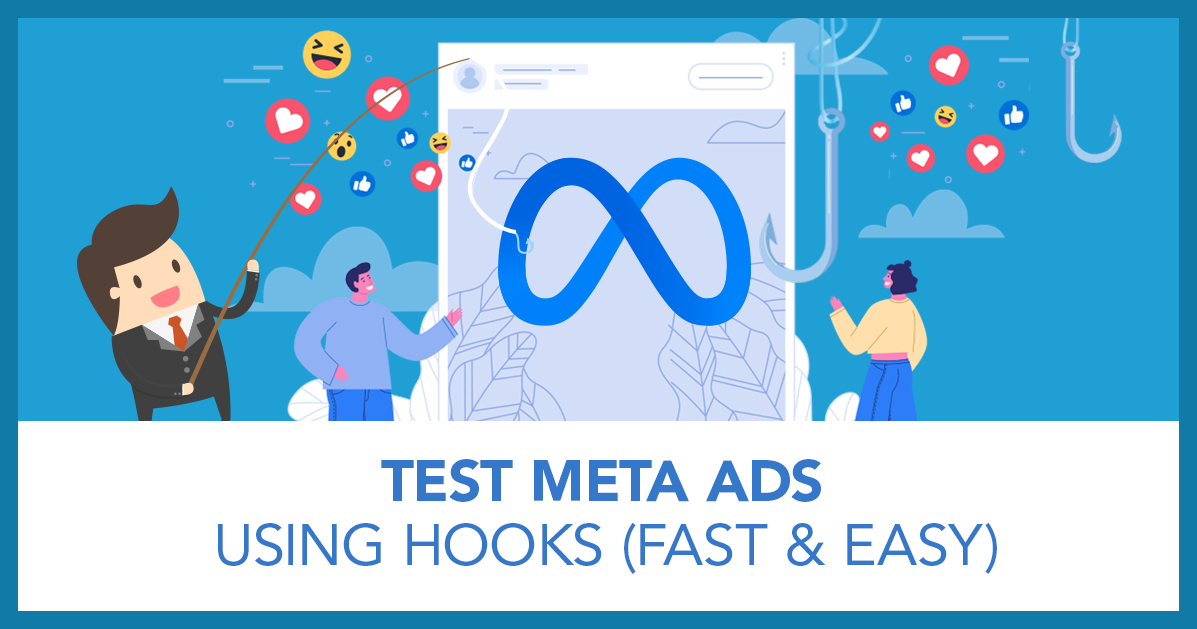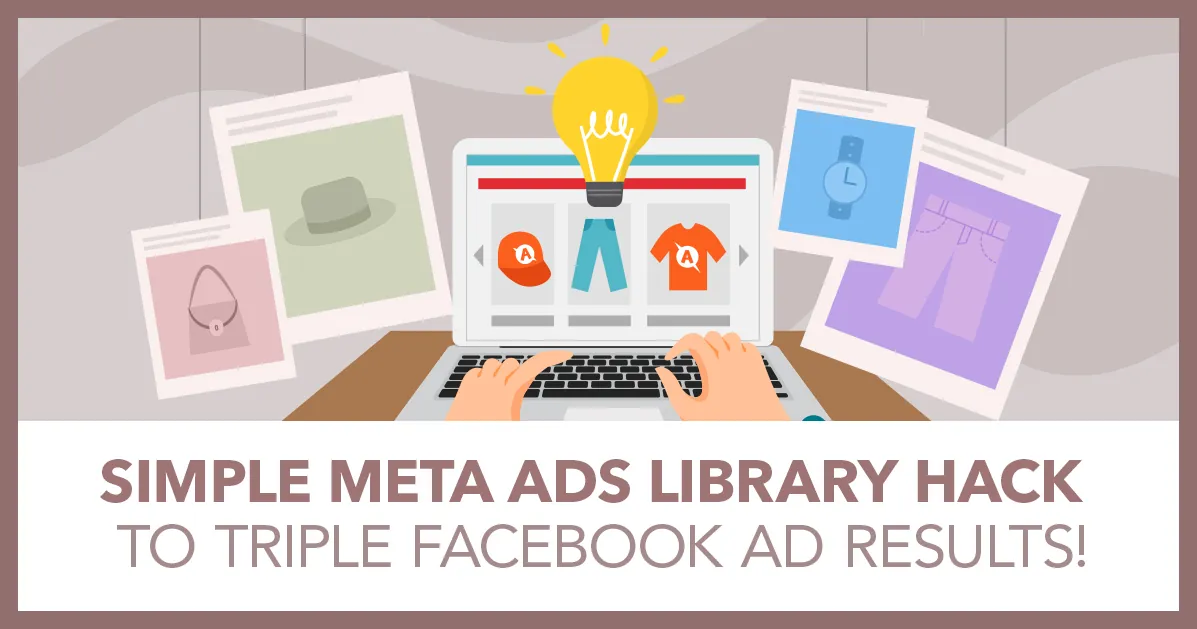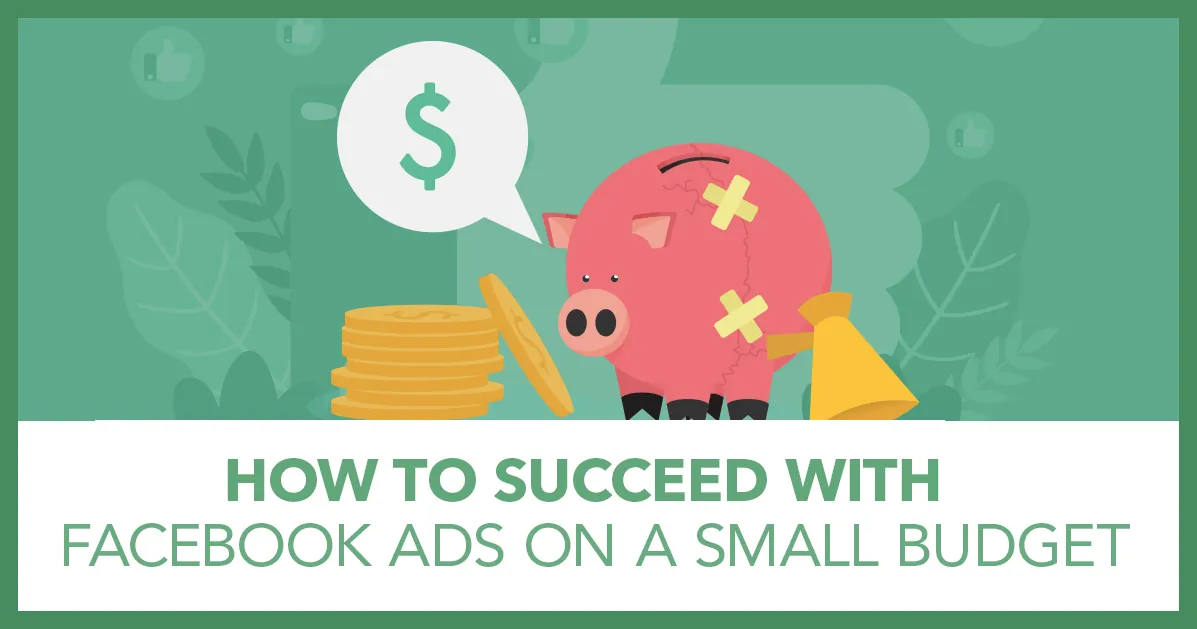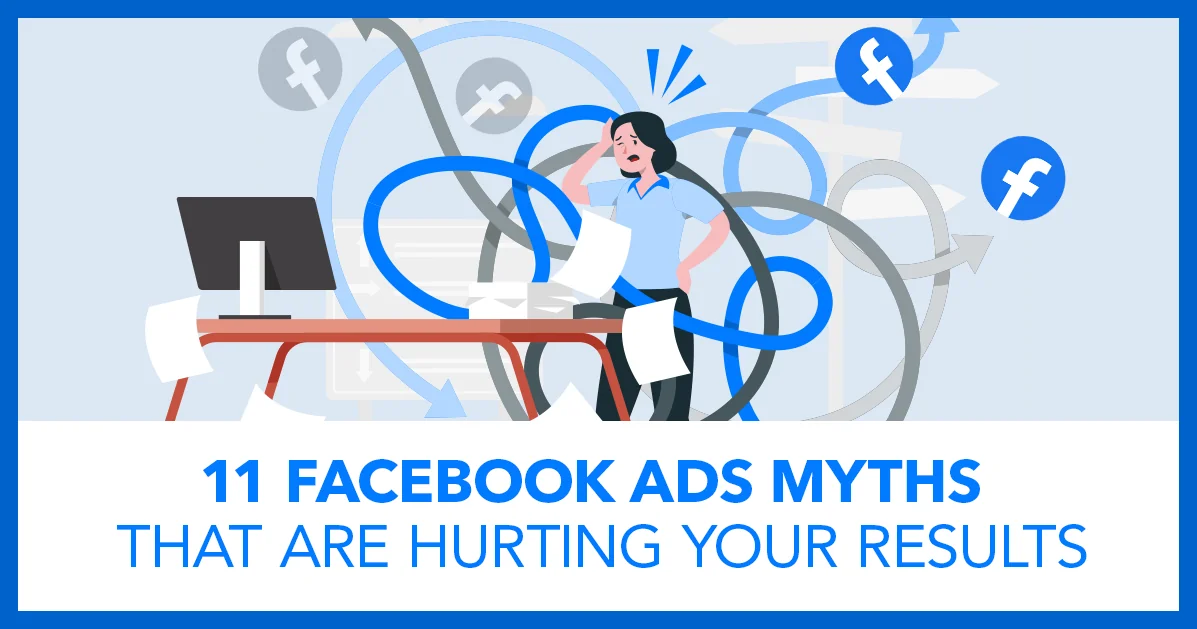
11 Facebook Ads Myths That Are Hurting Your Results
After spending over $100 million on Facebook ads and working with thousands of advertisers, it still amazes me how many harmful myths persist in the Facebook advertising world.
These myths don’t just waste time—they actively sabotage campaign results. So let’s bust them, one by one.
Myth 1: Targeting Is the Most Important Element of Facebook Ads
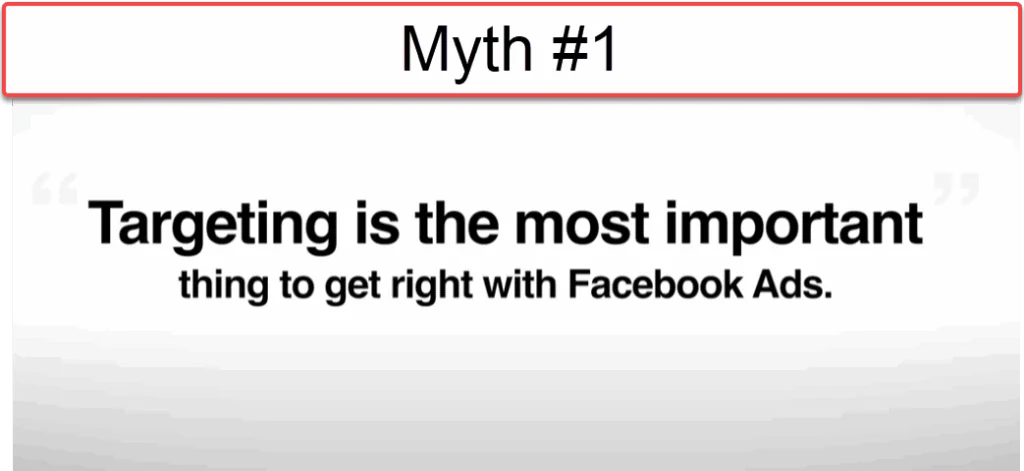
There’s a common belief that if you just find the right people, your ad will succeed.
That’s outdated thinking.
Here’s why:
- Meta’s algorithm is now highly effective at identifying the right audience.
- Unless your targeting is absurdly narrow or too restrictive, it’s probably not the issue.
What actually matters more?
- Your offer. Is it better than your competitors’? Better product? Better pricing? Better customer service?
- Your creative. This is where most advertisers fail. They obsess over targeting and ignore ad quality.
Let Meta handle the audience. You focus on giving people a reason to care.

Myth 2: Testing Is the Only Way to Learn
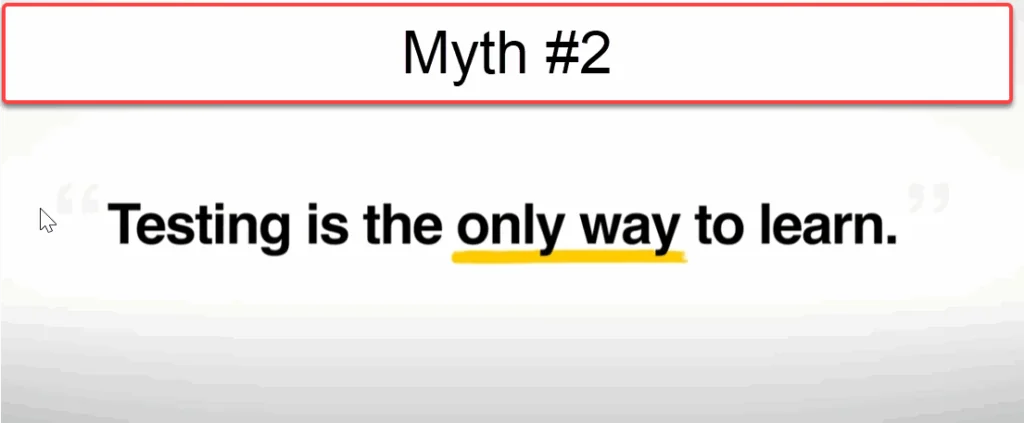
Yes, testing is important. But it’s not the only—or even the fastest—way to learn.
Smart advertisers also model.
Instead of starting from scratch:
- Look at high-performing ads already out there.
- Use them as a starting point to model your own.
Myth 3: Facebook Ads Only Work with a Large Budget

Not true.
You can absolutely get great results on a small budget. In fact:
- Start small. Test what works before scaling.
- Your “small” might be $10/day or $1,000/day—it depends on your business size.
- Smaller budgets often get better ROAS because Meta can show your ad to the best audience.
- With that said campaigns with larger budgets often product better results, but it’s not true. Usually it’s because campaigns run with larger budgets are usually run for larger companies. Larger companies have more brand value, more band recognition, and often superior products and services.
- If you are starting small, the potential upside is limited. Small budgets only go so far, and to get more out of your ads you will have to scale once you find a winning ad and offer.
Big budgets don’t guarantee results. Great creative and a strong offers are a much better place to focus.
More Free Facebook Ads Training

When you attend this webinar you’ll learn:
- 3 different Facebook ad strategies that we use every day. These strategies have generated millions of dollars in revenue and are tried and proven to work.
- How to customize the Facebook ads strategy to your particular business. There is no such thing as a one size fits all approach to Facebook ads.
- How Facebook and Instagram have changed and how to adjust your ad strategy to what works in 2021.
Myth 4: You Can’t Sell Directly with Facebook Ads
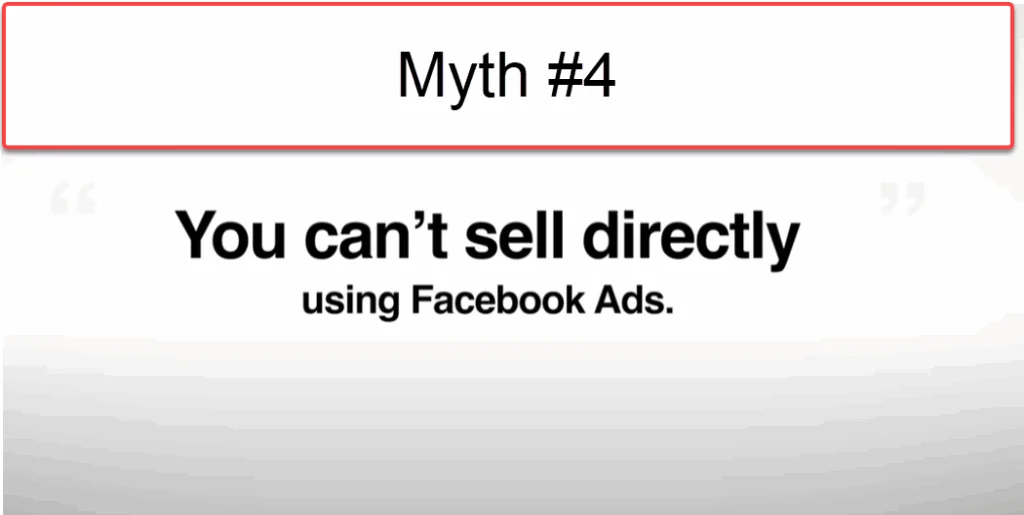
This myth refuses to die. It’s absolute nonsense.
Here’s the truth:
- You can absolutely sell directly—especially with products under $100.
- Most campaigns run for clients are direct-to-offer: ad → landing page → sale.
But context matters:
- Selling a $50,000 service? You’ll need a more complex funnel.
- Selling a product under $100? Go direct. It doesn’t require that you pay for multiple steps and for most businesses works great.
If direct sales aren’t working for products under $100, don’t blame the strategy. Look at your offer, creative, and copy first.

Myth 5: Facebook Ads Only Work for Cheap Items

Totally false—and very frustrating.
Facebook and Instagram ads can work beautifully for high-ticket items too.
Let’s compare:
- Low-ticket item with $40 LTV and $10 cost per purchase = 4X ROAS.
- High-ticket item with $10,000 LTV and $400 cost per customer = 25X ROAS.
Those crazy 70X or 100X ROAS case studies? They’re almost always high-LTV businesses.
The key is using the right strategy:
- Lower-ticket → Direct sales.
- Higher-ticket → Omnipresent content strategy, testimonials, demonstrate how the product works, nurture sequences.
Myth 6: You Can Only Scale Facebook Ads 10% at a Time

This old rule? Toss it.
Meta now lets you scale much more aggressively—often 70% to 120%—without re-entering the learning phase (depending on the account).
Here’s the real approach:
- Small budgets = larger percentage increases are fine.
- Big budgets = scale in smaller steps to stay stable.
Don’t let an arbitrary 10% cap slow you down, especially during time-sensitive campaigns like Black Friday.
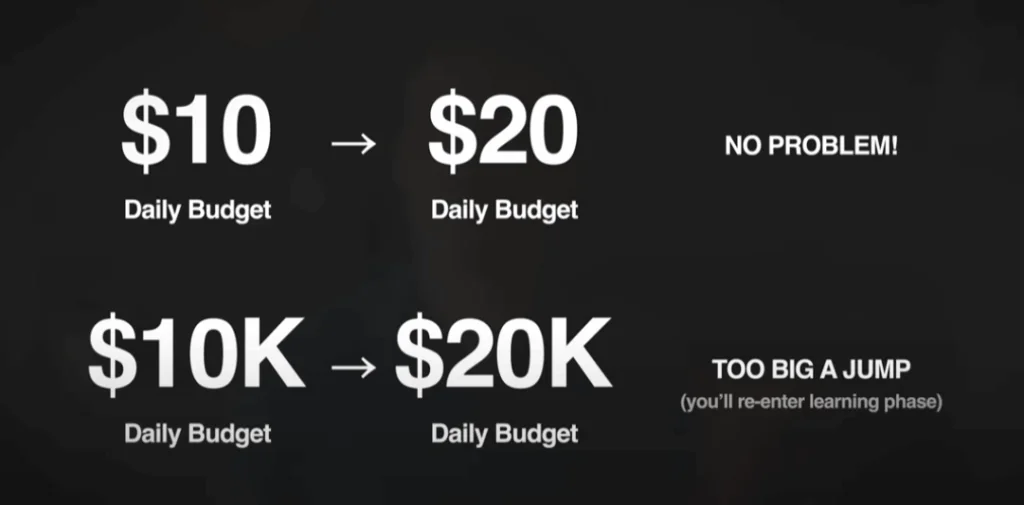
Myth 7: You Should Avoid the Learning Phase at All Costs

This is a fear-based myth.
Reality check:
- The learning phase helps Meta optimize your campaigns.
- It usually lasts only 24–48 hours.
- Making changes (like adding new ads) will trigger it—but that’s OK.
Avoiding changes just to dodge the learning phase? That hurts more than it helps.
Campaigns improve over time—even while learning. Embrace it.

Myth 8: Retargeting Doesn’t Matter Anymore

Meta does handle some retargeting automatically, especially with Advantage+ campaigns.
But there’s still plenty of value in manual retargeting, especially when:
- You want different creative for warm vs. cold audiences.
- You’re running time-sensitive offers.
- You want to re-engage customers for upsells or rebuys.
Example: You can joke or speak casually to warm audiences who know you—but that won’t work with cold leads.
So no, retargeting isn’t dead. It just needs more nuance.
Myth 9: Facebook and Instagram Followers Don’t Matter
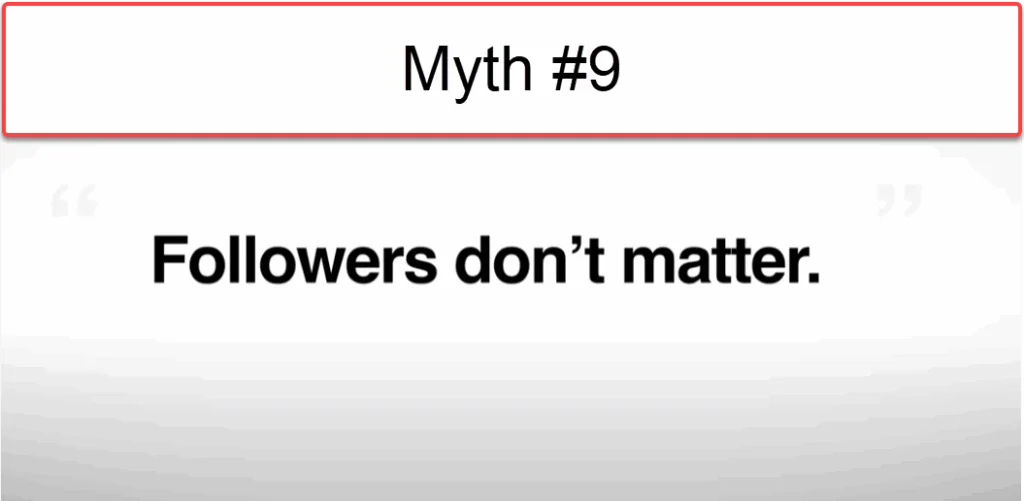
This one’s a bit more nuanced.
It’s true that:
- You won’t generate a ton of sales from organic reach alone.
- Paid ads are usually more efficient than follower growth campaigns.
But followers still matter—for credibility.
When someone clicks your ad and lands on your profile, what do they see?
- 43 followers and no recent posts? That’s a red flag.
- A solid, active profile? That builds trust.
Tip:
Run low-cost campaigns to grow a baseline of followers and polish up your social presence. It helps with conversion.

Myth 10: You Can’t Run Sales or Lead Campaigns with a New Ad Account
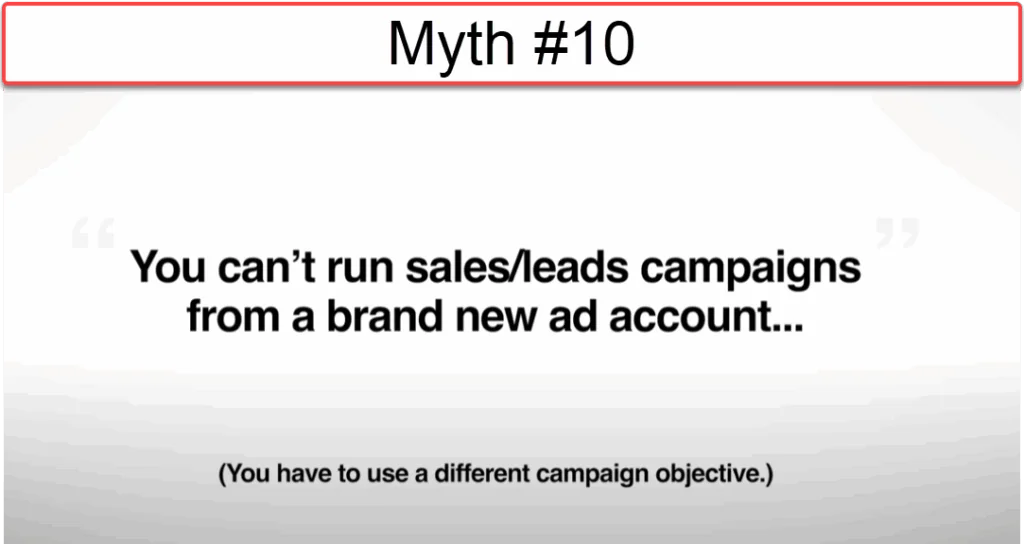
This is one of the most dangerous myths.
Just because your first conversion campaign doesn’t perform doesn’t mean you chose the wrong objective.
Here’s the flawed logic:
- “Meta doesn’t know what a conversion is with a new ad account, so I’ll run traffic campaigns first.”
That’s like saying, “My friend isn’t a great runner, so I’ll have him train for a marathon in a swimming pool.”
If you want leads or sales, run lead or sales campaigns.
Your ad account gets better at converting by converting. Train for what you want—don’t swim when you should be running.

Myth 11: Video Is Always the Best Ad Format
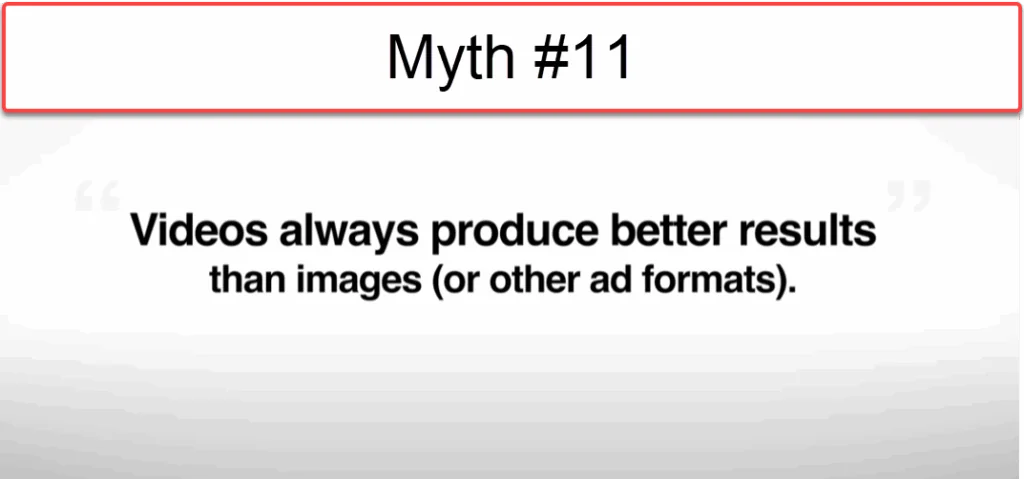
Not always.
Video ads are great—but image ads, carousels, and other formats often outperform video depending on the context.
What matters most is:
- Your business type.
- Your audience.
- Your creative quality.
We’ve gathered data from thousands of advertisers showing that no format wins every time. Test them all. Let performance decide.
How to Put This Into Practice
Facebook ads are still one of the most powerful tools in digital marketing—but only if you avoid the myths that derail results.
If you’re serious about getting better outcomes:
- Focus on your offer and creative.
- Ignore the outdated “rules.”
- Let Meta’s machine learning help you—not scare you.
And most importantly: test smarter, not harder.



